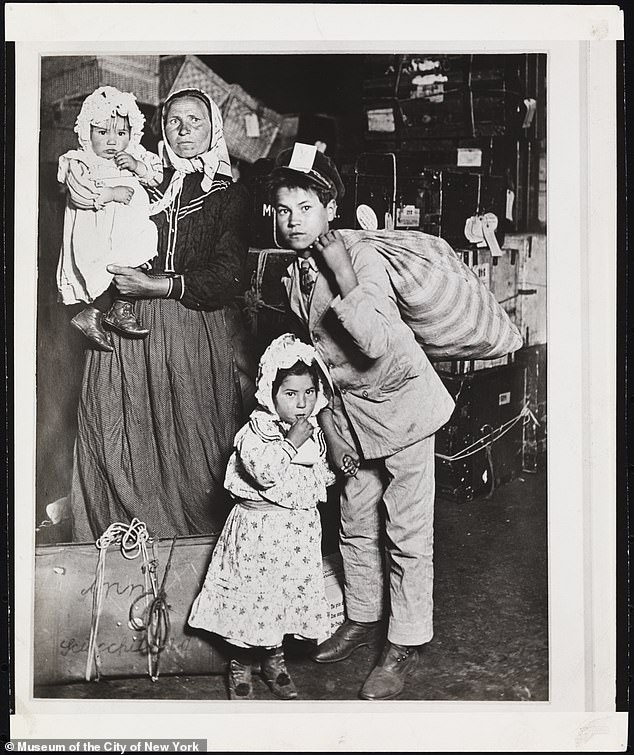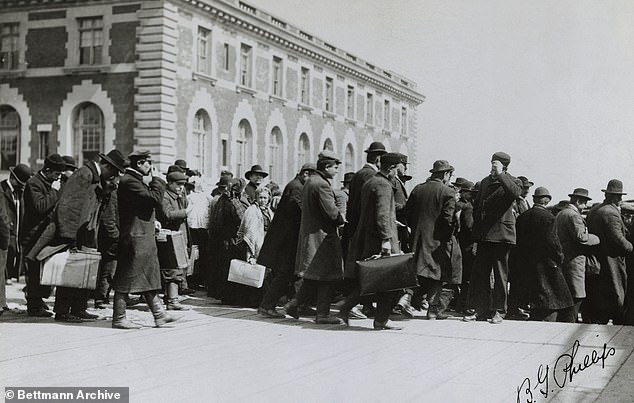- The Museum of the City of New York has opened a new exhibition titled ‘Preservation in Progress: Imagining Immigration’
- The exhibition pays tribute to the conservation of Samuel Bell Waugh’s monumental painting, The Bay and Harbor of New York.
- The grand opening coincides with the anniversary of April 17, 1907, the busiest day ever recorded at Ellis Island.
He Museum of the City of New York is launching a new exhibit to commemorate the anniversary of the busiest day ever recorded at Ellis Island on April 17, 1907.
Preservation in Progress: Picturing Immigration is an installation that offers visitors an exclusive look at the conservation of one of the museum’s most prized possessions: Samuel Bell Waugh’s monumental painting, The Bay and Harbor of New York.
The exhibition explores the painting’s importance as an early depiction of immigration to the United States and a historical document.
The museum also displays striking photographs of crowds arriving in the United States, as people flocked to the Big Apple in search of freedom, safety and a new beginning.
Visitors will be able to see this exhibition until October 13, 2024.
Samuel Bell Waugh’s monumental painting, The Bay and Harbor of New York, offers a rare depiction of early immigration.

On April 17, 1907, Ellis Island processed 11,747 immigrants.

On average, Ellis Island would process 5,000 immigrants a day

In April 1907, New York Harbor welcomed 197 ships and more than a quarter of a million passengers from around the world, according to the Ellis Island Foundation.

In total, in 1907, 1,004,756 immigrants were processed

An exterior photograph of the front facade of the Ellis Island Immigration Inspection Station, known as the French Renaissance Building, from 1907.

Ellis Island was the gateway to New York City for 12 million immigrants who crossed to start a new life in the United States between 1892 and 1954.

Pictured: A large group of immigrants lined up outside waiting to be taken off Ellis Island, by Edwin Levick, Ellis Island, New York, 1907.

Pictured: A group of women and children eating at Ellis Island, the long wooden tables pushed together to accommodate as many people as possible in this dining room.

Today, the 27.5-acre island still welcomes about two million tourists a year and received a $160 million renovation in 1990 to accommodate visitors.

Pictured: The pens in the Ellis Island Registration Room (or Great Hall), all filled with immigrants.

While first- and second-class passengers arriving in the United States were considered wealthy enough to be screened on ships bound for the United States, poorer passengers underwent inspections at Ellis Island.

Most made it through within hours, but others could be detained for days or weeks.

Pictured: A vintage American political cartoon from 1891, ‘Where the Blame Is’ with the caption: Judge (to Uncle Sam): “If immigration were properly restricted, you would no longer have problems with anarchy, socialism, the mafia and similar things. evils!”

In the photo: a family collecting all their belongings from the ship in 1905.

Pictured: Immigrants with trunks outdoors in front of a building on Ellis Island in 1907.

A brochure promoting the viewing of one of the works of art by Waugh, known for his moving landscape and panorama paintings.

The massive wave of immigration ended after the passage of the Emergency Quota Act of 1921 and the National Origins Act of 1924, which limited the number and nationality of immigrants allowed into the United States.


